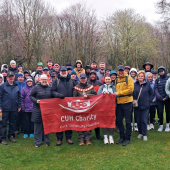Character of the Street: A Comparison of The Variation in The Shophouse Façade Along Heeren Street, Melaka.
Written by Bong Wei Jian, and Helena Aman Hashim
Department of Architecture, Faculty of Built Environment, University Malaya, Malaysia.
Abstract
The façade of heritage shophouses is the tangible aspect responsible for the character of historical streets in Melaka. Since the UNESCO World Heritage listing, Melaka has experienced a surge in tourism activity. This has resulted in owners and tenants renovating their heritage shophouse to capitalise on the economic boom. A comprehensive understanding of façade design features is the crucial criterion for good exterior restoration work. The description for shophouse façade design elements is singular in literature. Conversely, it is subjectively more complicated in actual practice. Hence, this study analyses the façade of heritage shophouses along Heeren Street and reviews their possible variations. The research undertook a qualitative approach where photographs are used as primary data and interpreted using thematic frameworks. Three categories of variations are identified: (i)variation within the architectural style, (ii)integration of decorative element from another architectural style, and (iii)structure hybridisation between architectural styles. The study suggested the variations due to the ‘whims’ are seen on the decorative element influenced by the culture. The ‘trend’ is responsible for structure hybridisation. The data is then extrapolated in the mosaic mapping to review the relationship between architectural styles and the street’s character. The research has suggested the authenticity level and concluded that 25.42% of the sample along Heeren Street are in their authentic condition. This research fills the gaps in the lack of reference for façade design elements and variation for future conservation work to ensures that the Outstanding Universal Values of Melaka World Heritage Site (WHS) remains intact.
1. Introduction
A facade is a solid, distinctive appearance used as the envelope to an existing structure [1]. Meanwhile, the shophouse has been a common building typology from early 1840 to the 1960s [2]. The fusion between façade design and shophouse typology has created a township that embodies the cultural essence and glorious past of Melaka. According to Maharom [3], the State of Melaka received 16.7 million tourists in 2017, with the Melaka WHS as the most visited spot. More than 600 heritage shophouses classified into nine façade categories [4] are located in this historical city's core area [5]. As a developing nation, Malaysia is under rapid modernisation and departing at an unchecked pace from the local architecture. The increase in property value [6] leads to the adaptation of buildings’ function to make the best investment return. Samadi, Mahmud [7] pointed out that poorly restored heritage shophouses are due to the difficulty in getting qualified consultants and reference resources. According to Ramli, Isnin [8] and supported by Ngah, Tazilan [9], uncontrolled adaptation is due to insufficient heritage building conservation knowledge and legal enforcement. This point is also emphasised by heritage proponent Josephine Chua [10] and supported by Ngah, Tazilan [9]on the observation of improper façade treatment in the Melaka WHS. Harun [11] added that heritage building conservation requires careful attention and experts from related practices. Ngah, Tazilan [9] suggested that complete documentation of a building's condition throughout the restoration process is critical for future reference. This research contributes to this philosophy through the documentation of the façade design elements. Despite the architectural classification, the shophouses' façade is the outer appearance that is subjected to personal preferences. Hence, this research explored the possible variations and authenticity in the façades across architectural styles and their responsibility in composing the street's character.
2. Methodology
This research undertakes a qualitative approach and uses theoretical knowledge to support photographic analysis. The literature is reviewed to identify the essential elements of the façade design across architectural styles. Then, visualisation of the narration is prepared using CAD software to formulate thematic comparison references. One hundred seventy-seven units of heritage shophouses along Heeren Street were selected as the study sample. There are three layers of the thematic framework matrix used to document and analyse the primary data. First, a sequential photo collage of the street elevations was prepared according to the JUPEM Cadastral Plan and used to identify the architectural styles. Components were subsequently extracted to the second matrix layer to analyse and compare the variations against the architectural styles' typical façade elements. An interpretive approach was then taken to describe the variation found across the styles with photographs used as evidence. Finally, the facade variation was coded in a diagrammatic catalogue using CAD drawings. An architectural style mosaic is prepared for the cross-comparison of the variation in façade design elements with the urban morphology. Then, the level of authenticity is interpreted based on the variation from the narration.
3. Results
From the analysis, 25.42% of the shophouses along Heeren Street are classified as an authentic sample. These shophouses fit the façade elements’ criteria as narrated in the literature review. The Dutch-Style being the largest sample to fall in this category. In contrast, the Early Shophouse Style and Art-Deco Style styles have the least amount of authentic samples, while Early Transitional Style and Early Modern Style are absent along the street.
Table 1. The analysed sample and its authenticity, November 2020.
A Catalogue of Variation
The variations are summarised and coded in Diagram 1: A Catalogue of Variation. The orange coding indicates the variations of the openings and ornamentation; While the darkened section indicates the sample altered in the overall façade scale. Adaptation of bi-partite upper floor openings is commonly seen across various architecture styles compared to the tri-partite configuration in their narration. Besides, hybridisation of two architectural styles is seen on the upper and lower floor façade, concurrently. Apart from the configuration, the opening shapes and heights are also visible variations. Ornamentation such as the Western “order” or the Chinese’s Chien-nien are subjected to personal preference as observed across the samples. Chinese culture, such as Chien-nien and Caligraphy, are present in various samples across different architectural styles. Conclusively, there are no identical buildings constructed next to each other, although they may be of a similar architectural style. An exception is when a recent restoration replicates the same structure to create twin shophouse.
Diagram 1. A Catalogue of Variation.
Stylistic Alternation, Dictates the Street of Characters
Figure 2. JUPEM Cadastral Plan coded in style mosaic along Heeren Street.
The style mosaic of heritage shophouses is summarised into three hypotheses to describe the urban morphology: (i)The identical twins along the street, (ii) The first morphology of the street. (iii) Ethnicity and cultural influence in various style.
Hypothesis From the Variation
Hypothesis 1: Identical yet different twins.
The buildings were built simultaneously in pairs. They are identical in architectural style but are different in ornamentation, such as calligraphy on the door.
Hypothesis 2: The first morphology of the street.
The hypothesis suggested that the street’s early styles comprised the Dutch Style, Southern China Style and Early Shophouse Style. The Early Shophouses Style are concentrated towards the end of the road, indicating the last “new development” along the street. Later day styles were then constructed on the vacant ‘lots’ within the street.
Hypothesis 3: Ethnicity and cultural influence in various style.
The integration of Chinese elements such as ornamentation, craving and calligraphy, which symbolically represents spiritual peace with nature, can be seen in the western style along the street.
Table 2. Hypotheses from the variation.
Chien-Nien and Chinese’s Influence
Being the most observed ethnic influence, as suggested in hypothesis 3, Chien-nien is frequently seen across façades along Heeren Street. Chien-nien (剪黏) is colourful cut-and- paste figures made from porcelain waste to express the economic status and cultural beliefs in conveying fortune. According to Chien-Lang [12], three significant Chinese’s beliefs are responsible for Chien-nien figures: Taoism, Buddhism and folk religions. The extension of the Chinese’s influence on the western architecture style is shown in Table 3.
4. Discussion
Variation from the Narration
The façade variations are imperceptible at a glance, but they are apparent in the thematic comparison. The variation suggests the era when adaptation to the façade is carried out but does not provide clues to the original structure's exact age. Additionally, modifying existing facades also demonstrates the importance and wealth of the street's inhabitants across time. The variations can be classified into three categories:
Table 4. A summary of the type of variations
Authenticity and the Street.
Heynen [13] suggested that ‘authenticity’ refers to something's realness and can either be the outer appearance, inner being or both. The people’s perception of ‘authenticity’ varies drastically in cultural debates from place to place. A paradigm shift on authenticity can be seen in 1994 [14], from Western materialism authenticity to the acceptance of authenticity based on the community's cultural values as emphasised in the Nara Document on Authenticity. Today the perception of authenticity can include a well-conserved Presbyterian church in Muswell Hill, London, which undergoes significant adaptive reuse to serve as a bar. In contrast, the Ise Jingu Shrine in Japan is completely dismantled and rebuilt with the same technique and materials every 20 years. Both these buildings are accepted as authentic to the common person. The authenticity of Heeren Street can be discussed from both tangible and intangible perspectives. The tangible authenticity of the façade that has retained its original design or, conversely, a latter-day façade that has been refurbished to adopt an original appearance are both seen as maintaining the street's authenticity. However, from the intangible perspective, this discussion is contrary. Lenzerini [15] suggests that intangible cultural heritage (ICH) consists of immaterial manifestation, representing the living heritage and cultural diversity. The tourism boom has attracted hotels and café, which, according to Ngah, Tazilan [9] has diluted the authenticity. He believes that Heeren Street is tangibly more authentic than Jonker Street since fewer irrelevant modifications are made to the façade element. This opinion is subsequently justified in the façade variation study. The study demonstrates that authentic facades are found distributed along Hereen street. A total of 45 out of 177 shophouses are identified as authentic based on their façade appearance. Additionally, 118 out of 177 shophiuses have had a degree of alternation made to their façade elements while 14 shophouses fall under the ‘Non Compliance’ category.
The Contradiction within the Classification of Authenticity.
Authenticity is a non-numerical construct for both tangible or intangible heritage. There are three primitive classifications to the ‘level’ of authenticity interpreted from Bendix [16]: the authentic example, the altered example, and non-compliance. The crucial discussion being the authentic and altered examples. The authentic example refers to the shophouse, that are either ageing old or well-preserved examples.
Table 4. Comparison between Dutch style in authentic condition.
Meanwhile, the altered examples are shophouses whose façade has gone through conversion work resulting in a loss of their original identity. However, evidence (structure element) of its earlier style justifies the classification but has reduced its authenticity.
Table 5. Comparison between the authentic sample and the altered sample.
5. Conclusion
The description of shophouse façade styles in literature is singular in their interpretation. However, it is pluralistic and complicated in reality. The variations of heritage shophouses are classified into three categories; - variation within the architectural style, integration of element from other architectural styles, and hybridisation between two architectural styles. Two reasons, namely, the ‘whims’ and ‘trends’, are suggested as reasons behind these variations. The Chinese belief has a significant cultural influence on the shophouses façade elements. The level of authenticity is derived from the variations. In short, the examples which are ageing or well-preserved are considered authentic when they meet the concept of tangible authenticity suggested by Bendix [16]. To conclude, this research has documented the variations in façade design elements within each architectural style of heritage shophouses along Heeren Street. The study explored several thematic frameworks to record and analyse the visual elements systematically. According to Alias [17], Malaysian legislation is sufficient to protect the heritage site. However, to complement and uphold the law, knowledge on façade design elements for future reference in conservation works, as suggested by Yung and Chan [18] is necessary and was carried out through this research. The Nara Documents on Authenticity indicates that tangible authenticity is identified through intangible evaluation. This is a possible future research area. Finally, change is undeniable, and proper reference is necessary to manage these changes.
6. References
1. Amir, H., K. Askari, and Dola, Influence of Building Façade Visual Elements on Its Historical Image Influence of Building Façade Visual Elements on Its Historical Image: Case of Kuala Lumpur City, Malaysia. Journal of Design and the Built Environment, 2009. 5.
2. Weebers, R., Y. Ahmad, and Z. M.A., Architecture and Typology of "Dutch" shophouses in Melaka. 2010.
3. Maharom, S., More tourists visit Melaka. 2018.
4. Baroldin, N. and S. Mohd Din, Documentation and Conservation Guidelines of Melaka Heritage Shophouses. Procedia - Social and Behavioral Sciences, 2012. 50: p. 192–203.
5. Kamarul Syahril Bin Kamal, P., Categories and Styles of Shophouses and Townhouses in Malacca and George Town, Malaysia. 2008.
6. Iman, A.H.M. and T.Y. Tian, HOW DOES ENVIRONMENTAL AMENITY INFLUENCE PROPERTY VALUES? A MALAYSIAN CASE. International Journal of Real Estate Studies, 2013. 8.
7. Samadi, Z.H., S.A. Mahmud, and M. Masri, PEMULIHARAAN WARISAN SENIBINA RUMAH KEDAI BAGI KEMAKMURAN BANDAR: ISU DAN CABARAN. Pemuliharaan Warisan Senibina Rumah Kedai Bagi Kemakmuran Bandar: Isu dan Cabaran Jalan Raya Timur, Klang, Selangor, 2007.
8. Ramli, R.R., Z. Isnin, and I.L. Jabar, URBAN MORPHOLOGY OF BUFFER ZONE AND ITS SURVIVAL IN THE HISTORICAL CITY OF MALACCA. Built Environment Journal, 2010. 7: p. 35-41.
9. Ngah, S., A.S.M. Tazilan, and M.N.M. Daud, THE CHALLENGES IN FAÇADE TRANSFORMATION DESIGNS OF JONKER MELAKA HERITAGE ZONE. Alam Cipta, 2019. 12(1).
10. Chua, J., Are we losing the "real" Melaka? 2016.
11. Harun, S.N., Heritage Building Conservation in Malaysia: Experience and Challenges. 2011.
12. Chien-Lang, L., Temple Roof Folk Art. 1990.
13. Heynen, H., Questioning Authenticity. National Identities, 2006. 8(3): p. 287-300.
14. Labadi, S., UNESCO, Cultural Heritage, and Outstanding Universal Value. Value-based Analyses of the World Heritage and Intangible Cultural Heritage Conventions. 2013, Lanham. New York. Toronto. Plymouth, U.K.: ROWMAN & LITTLEFIELD PUBLISHERS, INC. 14.
15. Lenzerini, F., Intangible Cultural Heritage: The Living Culture of Peoples. European Journal of International Law, 2011. 22(1): p. 101-120.
16. Bendix, R., Diverging Paths in the Scientific Search for Authenticity. Journal of Folklore Research, 1992.
29(2): p. 103-132.
17. Alias, N., Melaka as a World Heritage Site: A Study from The Legal Point of View. Jurnal Perspecktif, 2017. 3(1): p. 18.
Authors Biography
Bong Wei Jian is a student at the M.Arch Program, Department of Architecture, Faculty of Built Environment, University Malaya. He received his B.Sc. (Architecture) from University Malaya in 2018. Wei Jian is particularly interested in heritage architecture, community and culture. He is responsible for the master planning proposal of a historical township in Fujian District, China. Besides, he has participated in the publication titled Managing Change and the Field School Symposium hosted by the National University of Singapore, focusing on community engagement and heritage study in Ban Pathom, Thailand. Practising abroad allowed him to understand people from the different cultural background. He perceived architecture as the existence of people and their culture framed within humankind's innovative structure.
Helena Aman Hashim is an architect and Senior Lecturer at the Department of Architecture, Faculty of Built Environment, Universiti Malaya. A graduate of the University of Miami, Coral Gables, Florida, she obtained her postgraduate doctoral studies in Conservation Studies from Universiti Malaya. Helena is involved in conservation advocacy, serving on Badan Warisan Malaysia's Council (2002-2019) and founding and ICOMOS Malaysia's board member (2014-present). She is a key member in several acclaimed restoration projects, including the Stadium Merdeka, Kuala Lumpur and Masjid DiRaja Sultan Sulaiman in Klang. Her research interest spans several topics, including the traditional shophouse and Malay houses.
This research paper was presented at the 2021 CABE Malaysia Chapter online Conference.









